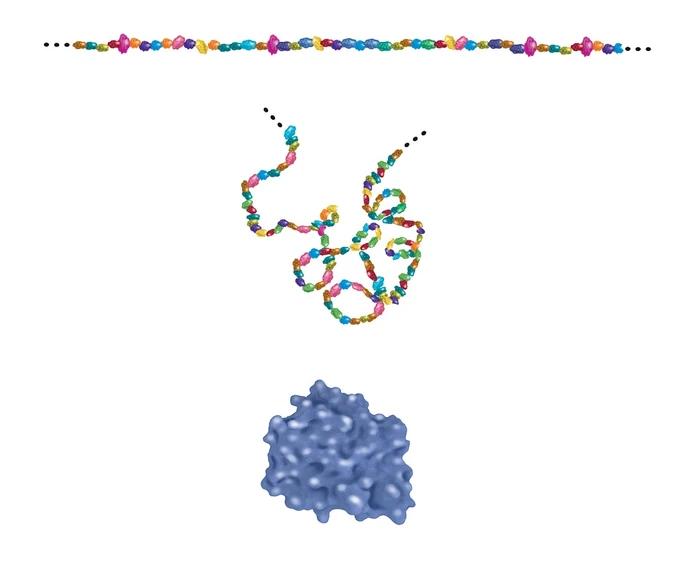
Hi,
This week’s issue highlights key developments in protein engineering, the evolving impact of AI in healthcare and research, early images from NASA’s new infrared telescope, and advancements in sustainable space exploration, culminating in a look at a novel miniature nuclear battery.
Protein Engineering
Scientists have developed a new technique called “protein transposition” for precisely replacing internal protein segments. This method uses special protein-splicing tools to insert desired pieces into target proteins, even when they are already assembled. This simpler approach avoids complicated steps and the need for refolding. The scientists successfully demonstrated this in various proteins and even in living cells. This innovation provides new ways to study protein function and create engineered proteins.
Protein transposition, unlike gene editing, directly modifies existing proteins instead of altering the DNA blueprint. Gene editing (like CRISPR) makes permanent changes to the genetic code, affecting future protein production. Protein transposition offers a more immediate and targeted way to alter specific protein molecules by swapping internal segments. This is akin to directly modifying a finished dish versus changing the recipe.
Read more at Science.
AI as good as doctors?
A new study compared AI and physician treatment recommendations in a virtual urgent care setting. The research found that initial AI recommendations for common complaints were often rated higher than the final recommendations made by physicians, particularly in identifying potential antibiotic-resistant urinary tract infections. However, physicians excelled at gathering more comprehensive patient histories and tailoring their recommendations accordingly, suggesting that AI and clinicians have complementary strengths in virtual care.
Read more at Annals of Internal Medicine and Cedars Sinai.
Meanwhile, a year-long clinical trial revealed that an AI tool, CONCERN Early Warning System, can detect patient deterioration in hospitals nearly two days earlier than traditional methods by analyzing nurses’ notes and data. The study, involving over 60,000 patients, found that CONCERN reduced the risk of death by over 35% and decreased the risk of sepsis by 7.5%. The AI analyzes patterns in nursing documentation to identify subtle signs of decline, enabling timely interventions and potentially saving lives.
Read more at Nature Medicine.
First images from NASA’s new infrared telescope

NASA’s new infrared space telescope, SPHEREx, has successfully captured its first images, marking a significant milestone for the mission. Designed to conduct an all-sky spectral survey, SPHEREx will map millions of galaxies and investigate the origins of water and molecules in star-forming regions. The telescope’s unique spectroscopy technology allows it to observe a wide range of infrared wavelengths, providing unprecedented insights into the Universe’s evolution.
Read more at NASA.
Honda tests renewable energy for lunar missions
Honda is partnering with US companies to test its renewable energy technology on the International Space Station. The system, which generates electricity and breathable oxygen from water using solar power, is being developed for potential deployment on the moon. This technology aims to support long-term lunar missions by providing a sustainable power and life support solution.
Read more at Honda.
Bio-cement for repairing lunar bricks
Researchers at the Indian Institute of Science (IISc) have developed a bio-cementing technique using Sporosarcina pasteurii bacteria to repair cracks in simulated lunar soil bricks intended for Moon habitats. The bacteria produce calcium carbonate and biopolymers, strengthening the bricks and making them more resilient to extreme temperatures. The team plans to send the bacteria to space to study its behavior in microgravity for future in-situ lunar construction repair.
Read more at Frontiers in Space Technologies.
AI in natural science research
Researchers have unveiled two innovative AI models, InstaNovo and InstaNovo+, that significantly improve the accuracy and efficiency of protein sequencing in Mass spectrometry-based proteomics. These models address limitations of existing methods, such as reliance on incomplete databases and high computational costs, by enabling de novo peptide sequencing with greater precision.
This breakthrough has significant implications for research, personalized medicine, drug discovery, and diagnostics. For instance, the models aided in identifying potential targets for immunotherapy in cancer treatment by discovering novel peptides presented on cell surfaces.
Read more at Nature Machine Intelligence.
Meanwhile, researchers used artificial intelligence to reconstruct the evolutionary history of bacteria over the past 3 billion years. By analyzing bacterial genomes and using the Great Oxidation Event as a timeline marker, they discovered that some bacteria could use oxygen nearly a billion years before it became abundant in Earth’s atmosphere. Surprisingly, cyanobacteria may have even evolved oxygen use before photosynthesis.
Read more at Science.
In more news, researchers at Osaka Metropolitan University have developed an AI-powered fluid simulation model that dramatically reduces computation time for ocean simulations. Their new model, utilizing graph neural networks, achieves the same accuracy as traditional methods but completes calculations in just three minutes compared to 45 minutes. This advancement could greatly benefit offshore energy, ship design, and real-time ocean monitoring.
Read more at Applied Ocean Research.
More in AI this week
- Google announces Sec-Gemini v1, a new experimental cybersecurity model 🔐
- New multimodal models from Meta: The Llama 4 herd 🦙
Coin-Sized nuclear battery
A Chinese company, Beijing Betavolt New Energy Technology, has started mass producing the BV100. It is a miniature atomic energy battery roughly the size of a coin. It utilizes the radioactive decay of nickel-63, which transforms into stable copper, to generate electricity. The BV100 can reportedly provide a continuous power output of 100 microwatts at 3 volts for up to 50 years without requiring charging or maintenance. While the current power output of BV100 is very limited and can perhaps only be used for low-powered devices, this could be the beginning of a new race for long-lasting consumer batteries.
Read more at Techspot.
Thank you for taking the time to read this issue of smuklok! We hope you found it interesting.
We're always looking for ways to improve this newsletter. Let us know what you think – your feedback is greatly appreciated. Just reply to this email.
Have a great week ahead and see you next week!
Signing off,